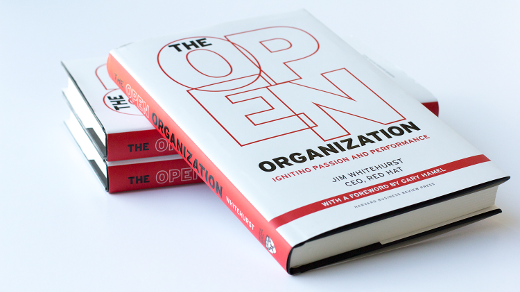We've finally made it to Chapter 7, Catalyzing Direction, in our seven-week Open Organization virtual book club. In previous weeks, we've discussed the why and the how of open organizations. Starting with last week's discussion on inclusive decision making, we dove into the what component of a "bottom-up" organizational model. Now it's time to focus on setting direction for your mission-based organization.
Discussion (Chapter 7: Catalyzing direction)
In the book club this week, we'll be discussing "Chapter 7: Catalyzing Direction."
"Traditionally, direction is set up at the top. The typical structural solution at most companies includes a strategy or strategic planning department. These organizations typically have a handful of bright MBAs with skills and training strategic frameworks, planning, and the like. Working with senior management and perhaps a few consultants, they help craft the core strategies that the organization ultimately follows. Strategic decisions are then handed down for execution throughout the company. It's simply assumed at most companies that the senior executive team and the board of directors set strategy. Obviously, top-down directives don't do well in open organizations. So, given this new type of organization, if you have all these engaged and passionate people ready to take on the world, how do you, as a leader, set the direction in which the company is going?" (pp. 163–164)
In the book, Jim Whitehurst also describes himself as a "Cheerleader-in-Chief." I take this to mean that he doesn't want to set direction by saying: "Go do this, that, and the other." Instead, he wants ideas to bubble up from the organization so he can say: "What would that accomplish?" "I think it needs more work," or "Great idea. Go do that."
A great example of this style is Red Hat's support organization. Jim was interested in our customer experience strategy and how we might leverage our strengths to pivot and be more customer-centric. In this context, Jim set direction for our support organization: he wanted it to be more customer-focused. He didn't say exactly what to do; he simply said, "Let's go in this direction."
From there, ideas started to turn into new initiatives. At regular intervals, the support organization checked in with Jim to report back on its progress. Cheerleading ensued. How the team delivered support and how it prioritized initiatives based on customer feedback and needs were all transitioning toward this new objective: to be more customer-focused. The support organization looked into new ways to gather customer feedback with interviews from customers, data from Net Promoter Scores, and the creation of a customer council.
Along the way, Global Support Services expanded its charter to become Customer Experience and Engagement (CEE). The end result: CEE grew from a technical support focus to an organization that serves multiple aspects of the customer experience beyond support (these include security, certifications, and multiple core benefits for Red Hat subscriptions).
So my first question for discussion this week asks you to share similar stories:
- Do you have an example of a leader setting a high level direction and the results were multiple, unexpected, great things?
- In what ways might your organization renovate its hierarchies to increase speed and flexibility?
- What is the benefit of discussing ideas before they are fully baked?
- How can the open organizational mission to "release early, release often" change the way you work?





2 Comments